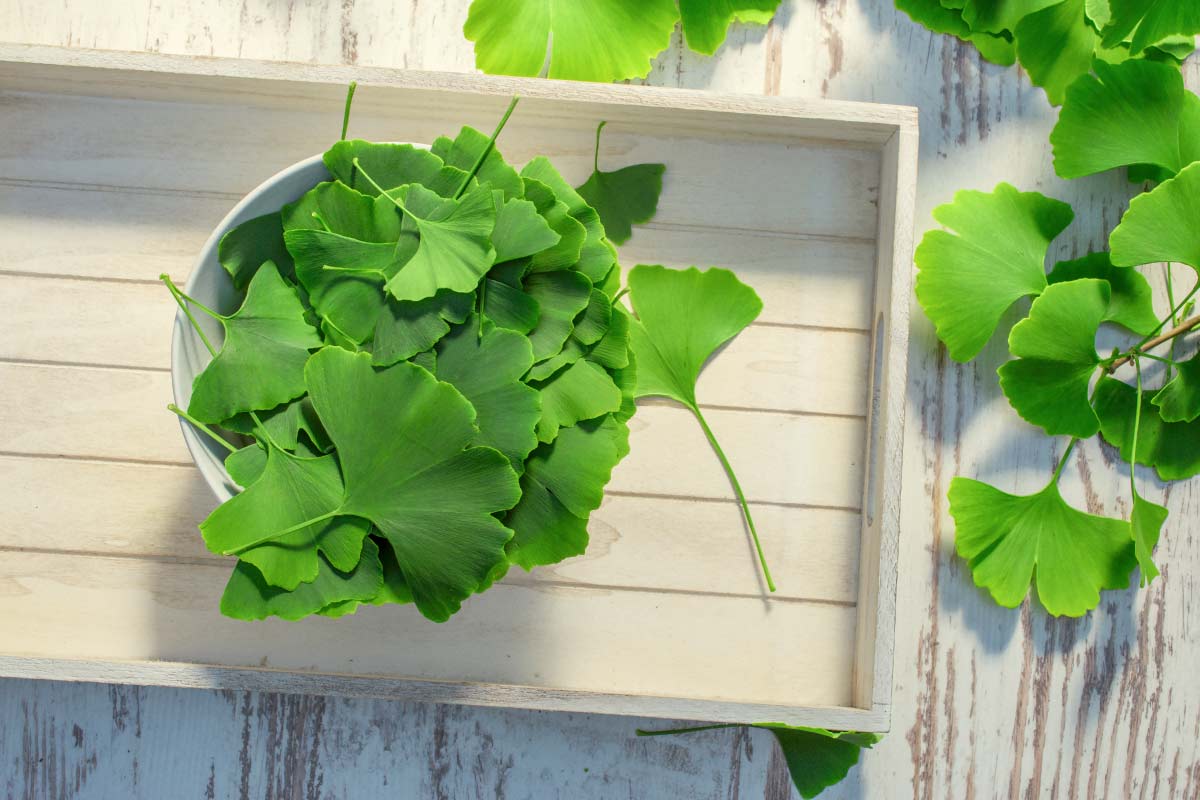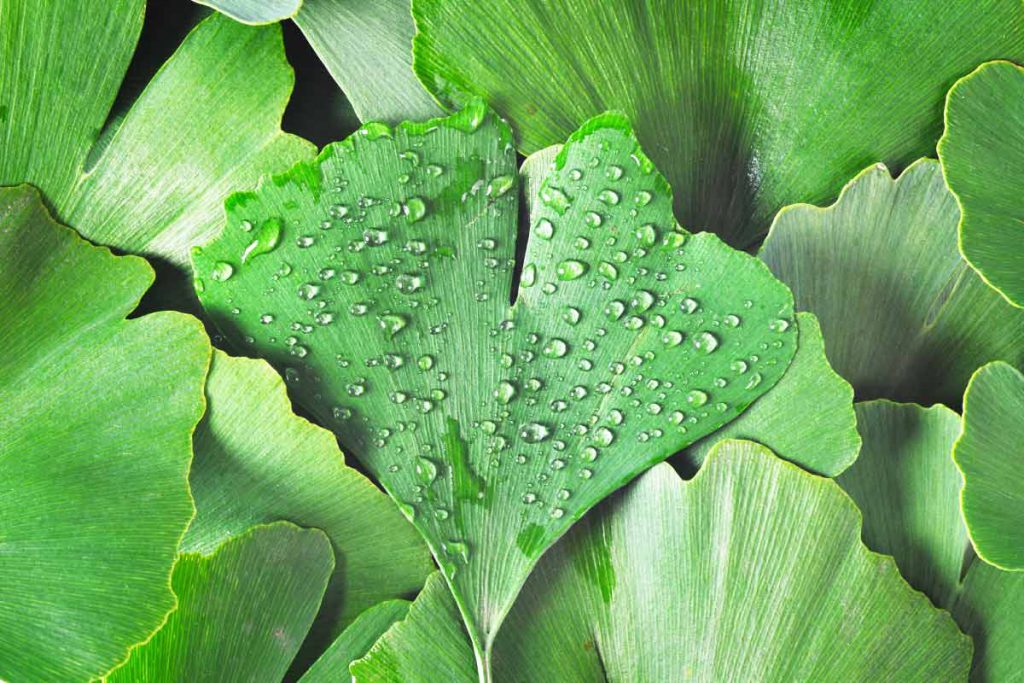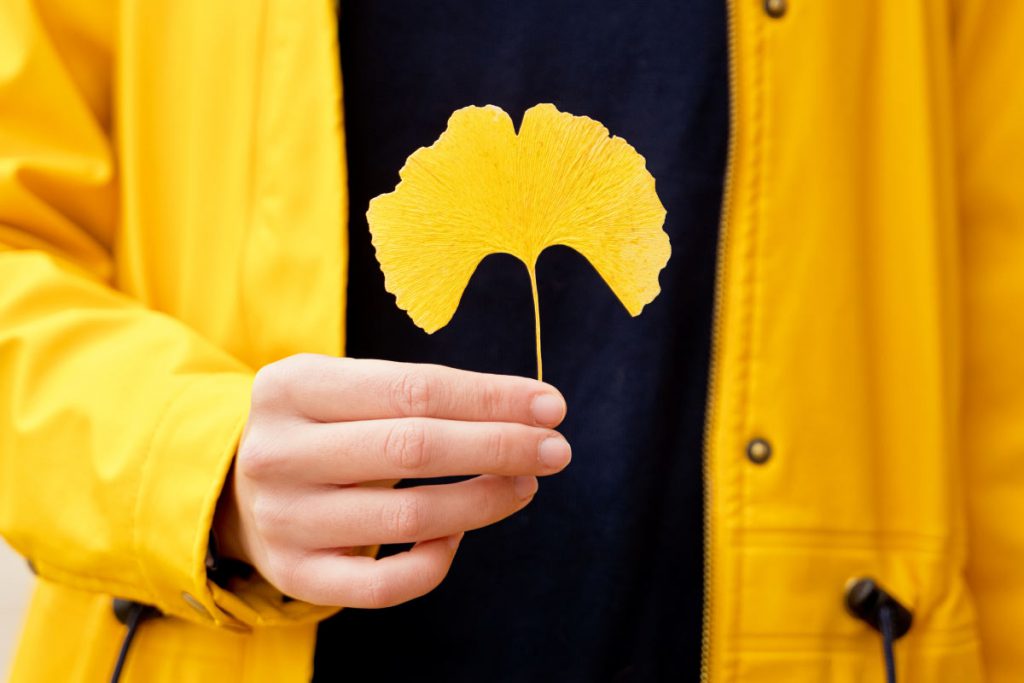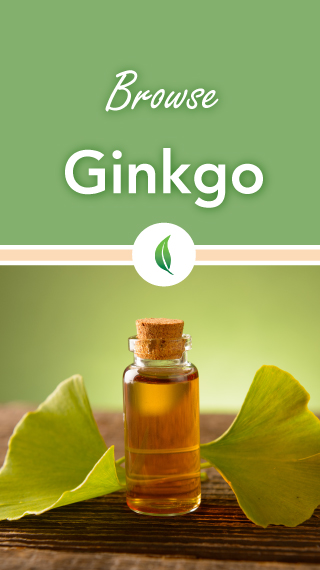
Way-to-Go Ginkgo…Thanks for the Memories!
April 18, 2022
Its history reaches back millions of years. In fact, gingko biloba is one of the oldest trees on earth, outliving dinosaurs and remaining unchanged for more than 200 million years! It’s often referred to as a living fossil since it is the only surviving member of an ancient order of plants. Thriving for this long, the ginkgo biloba tree must have some serious anti-aging properties!
In This Healthy Insight:

What is Ginkgo Biloba?
Ginkgo biloba, commonly known as maidenhair, is a deciduous pyramid-shaped tree native to China, but it now grows all over the world.
The ginkgo biloba tree is unique in that it has gender – usually male or female. It’s well-known for its attractive, fan-shaped leaves evenly divided into two lobes. Varieties can become big shade trees up to 80 feet high or tiny enough to use in bonsai gardens.
This ancient tree has been cultivated for centuries and remains popular today especially as street trees and low maintenance landscape additions. It grows 1-2 feet a year, tolerates cold weather, harmful invaders, and adverse urban conditions. Its delicate leaves turn from gray-yellow or yellow-green leaves in the summer to vibrant yellow in late fall.
Uses of Ginkgo
Besides its ornamental use, ginkgo biloba has been used for centuries for many different health issues you’re probably already familiar with. Due to ginkgo’s longevity, most herbal use involves anti-aging, memory, cognitive function, concentration, and mental performance.
But what you may not know is that it’s also been studied for circulation too. Ginkgo can help boost blood flow by promoting the dilation of blood vessels and reducing the “stickiness” of platelets. That’s good news for your extremities and overall health.
Research continues on the benefits of ginkgo, mainly focusing on its leaves. Although both the leaves and seeds are used in traditional Chinese medicine, never eat raw or roasted ginkgo seeds as they can be poisonous.
Reviews
| K | Tammy | CA | Your products are truly amazing in every way! I take Ginkgo Biloba for brain function support, which has done wonders for me. Your product has even helped my memory. |
| C. | Juanita | CA | I have had memory and concentration issues, but your Ginkgo Biloba extract helps. |
| G. | Michael | OH | I am amazed, glad and pleased at the low cost of your wonderful supplements. My favorite has been Gingko Biloba for the last 2 years. |

What’s in Ginkgo?
Ginkgo leaf is chock-full of phenolic compounds, flavonoids, terpenoids and other naturally occurring constituents. In general it has two main active ingredients: terpene lactones (ginkgolides and diterpenes) and ginkgo flavone glycosides which deliver antioxidant properties.
Additionally, gingko delivers trace amounts of naturally occurring vitamins and minerals including Vitamins B1, B2, B3, B6, B8, B12, Vitamin D, Vitamin E, calcium, copper, zinc, magnesium, zinc, folic acid, potassium and more.
Forms of Ginkgo
One of the best-selling supplements, ginkgo biloba is widely available online and in stores. It appears the most effective dosage is 120-240 mg. taken throughout the day. You can find it in the following forms:
- Tablets
- Capsules
- Liquid extracts
- Dried leaves
- Tea
- Powder
Do not eat raw or roasted ginkgo seeds which can be poisonous. Always purchase from a trusted reputable retailer.
Want to learn more about this great memory herb? Check out our ginkgo line now.



